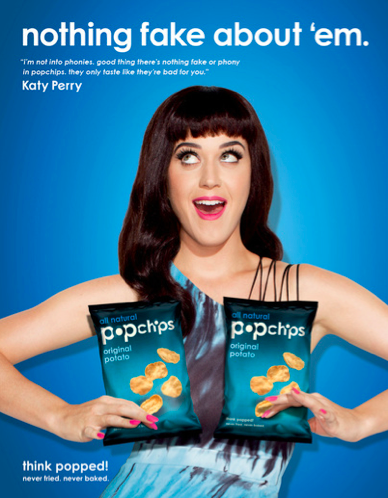ART & COPY sheds a unique and powerful light on the creative side of advertising. As an artist, I find the creative aspects of any business to be immensely important and the visual features of advertising are often times the most impactful parts. Doug Pray used spirited and distinctive individuals to focus on in his film which made it all the more captivating. George Lois, Mary Wells, Dan Wieden, Lee Clow, and Hal Riney were all featured in the film for their creative slogans that are now household phrases such as, “just do it”, “I Love NY”, “Where’s the Beef”, “Got Milk?” and “Think Different”. These phrases are all so simple yet they are powerful enough to bring to mind specific brands and the ideas associated with them. I interned at Duncan/Channon, an advertising agency in San Francisco, where I developed an interest in the creative side of advertising and marketing but ART & COPY made me consider becoming an art director even further. Before watching the film, I used to think of my artistic abilities and creativity as only applicable in a fine art setting, but seeing how art directors work in advertising was tremendously interesting to me personally and I will likely look further into the work of art directors.
The creative process of advertising is important in making an advertisement that will have a powerful impact on its audience. Creating an advertisement that is unique and able to be differentiated from others similar to it is an arduous process for creative teams however it is crucial to do so in order to avoid being ignored by consumers or even boring them. That is one of the reason why super bowl ads are so effective, they use evocative imagery and well thought out creative story lines to draw in consumers in unexpected ways, thus sticking in their memory and creating a desire for the product.
Super Bowl Advertisements
Number of advertisements counted: 86
While watching the super bowl, I was able to count approximately 85 brands advertising themselves, however there were almost one hundred advertisements in total. Most ads top out around thirty second, while others extended to a minute or only a couple seconds. These short time frames give advertisers a limited space to reach out to the audience using a combination of imagery and audio. The most effective ads also usually include some degree of comedy. The corporations featured in super bowl ads have to put a lot of time and thought into their advertisements because each thirty second slot is expensive, costing multiple millions of dollars per slot. Out of the brands shown in the 2017 Super Bowl, the most effective was T-Mobile based on the creativity of their advertising, the frequency in which they were shown, and the overall impact of the ad.
T-Mobile used a celebrity endorsement, Justin Bieber, to talk about their unlimited data plans and appeal to millennials and children dancing in the advertisement to make an emotional appeal to parents. Bieber was not the only celebrity T-Mobile used however, Snoop Dogg and Martha Stewart were also featured in one of their ads shown as the antitheses of each other but despite their differences, they could both agree on the unlimited data T-Mobile offers as being the best out there. Lastly, Kristen Schaal appeared in a couple of the T-Mobile’s ads parodying 50 Shades Darker, a romance/drama movie coming to theatres on February 10th. Because 50 Shades Darker is targeted towards an older audience, T-Mobile’s parodies of the movie trailers reaches not only millennials, but also parents and older women who have read the 50 Shades of Grey series. The use of parody makes the advertisements funny to the viewers (because let’s face it, who can contain their laughter watching the awkward almost-sex-scenes in the 50 Shades Darker trailers?) but it is also relevant to pop-culture as 50 Shades Darker is coming out soon so Super Bowl viewers are likely to pay attention to the trailers and commercials for upcoming movies and TV shows.
What makes T-Mobile’s advertising most effective is their ability to reach their target audience. The target audience for the Super Bowl is pretty straightforward: football fans, their friends, and family, and the majority of Americans who own a TV. T-Mobile then targets their audience even further than this because millennials are known for being particularly tech-savvy and spending the most time using technology so by using celebrities who appeal to millennials, T-Mobile creates a sense of trust in their brand as well as providing recognizable figures to those they are advertising to.
For me, the T-Mobile advertisements are what stuck most and held my attention the longest. This is not unusual for Super Bowl ads as they usually make what they are advertising a mystery until the last couple seconds, however T-Mobile’s ability to make their advertisements feel more like comedy skits than something to sit through while waiting for the game to come back on made them all the more enjoyable and effective. They also used repetition and scored three minutes of advertising slots during the Super Bowl, which means that T-Mobile spent somewhere around 30-million dollars on their advertising in the Super Bowl without even counting the cost of production. Overall it makes sense that T-Mobile’s ads would be some of the best considering how much they must have spent on the production and the 30-second advertising slots, but what made them so effective was their use of comedy, celebrities, and consistent presence from the beginning to end of the Super Bowl.
My brand mission is to work collaboratively with others in a creative environment to produce marketing strategies and advertisements for other brands in order to create value in a fun and unique way. My audience is my peers and fellow college students who I will likely work with in the future, professors who can help lead me in the direction of my desired objectives, and future employers who will facilitate my work. After this my target audience will be potential buyers of products I am advertising.
I was born in Florida, however I have had the opportunity to travel and live in many amazing and flourishing cities. I studied abroad in Paris, France for a semester and learned about how different cultures have different values and marketing and advertising varies greatly by country. I have also lived in Guatemala for two years, spent a month in new Zealand, and travelled all over Europe and have been exposed to so many different ways of living and different cultures. In Florida, I worked at Disney World where I learned to communicate with people from all different backgrounds and experience some of the world’s best advertising and marketing strategies firsthand. This makes my personal brand unique and compelling because most people have not had the opportunity to live and experience so many different cultures but because I have, I have a comprehensive world view and understanding of how culture affects advertising and vice versa.
My brand story begins with when I interned at a non-profit charity in New York City called WhyHunger. There I learned the importance of philanthropy and I travelled to India with my dad and saw the Red Light District and areas in extreme poverty; this exposure is what inspired me to have a philanthropic or charitable facet of any company I work with. At Disney I worked in Animal Kingdom as a merchandise associate and worked to raise money for the wildlife conservation fund that goes to researching and implanting ways to make the environment safer for animals and humans both, a cause I have been deeply invested in since childhood. My brand is authentic to me because I care about helping others and believe that there is always a way to make everyone happy; in advertising this authenticity is important because I intend to create advertisements that do not mislead consumers but rather inform them in unique and creative ways.
My brand is based on my personal strengths: art, writing, and communicating with other people. I have loved visual art for as long as I can remember and have always been a people-person. I want my brand to help me achieve a career in which I help the company to have fun in a work environment and create innovative and unique advertisements that appeal to consumers as well as the company helping me to tap into my creative side and produce meaningful work that not only helps the company but the world as a whole.
Page 1
My reaction to the popchips ad was positive because I found it humorous, Katy Perry is in it and I’ve had personal experiences with songs by her which made the ad more relatable and relevant to me and created more trust in the brand before even knowing what they were selling. The visual aspects of the ad are visually pleasing and the background color is a calming blue that matches Katy’s dress. Phrases such as, “nothing fake about ‘em” and “never fried, never baked” allude to the healthier side of the chips by showing how they contain less fake products than their competitors. Katy is holding two bags up to her breasts as if to say, “nothing fake about ‘em” in reference to breast implants which makes the ad funny to most viewers.
The main message of the ad is that Pop Chips are healthier than the competitors but they still have a great taste. This is shown by the quote, “I’m not into phonies. Good thing there’s nothing fake or phony about popchips. They only taste like they’re bad for you” –Katy Perry. Popchips clearly wants their audience to not see them as any diet brand chips but as fun and still good-tasting despite being a healthier option which is why they used a celebrity famous for her fun-loving attitude a exciting shows and music videos.
The target audience is millennials and young adults. This demographic listens to pop music and the radio so it is likely they would know of Katy Perry. Healthier living has also been trending recently and the number of gyms and health food stores and restaurants have been increasing so popchips have come around at a good time. The Huffington Post published an article stating, “In a January 20, 2015 article by USA Today reporter Bruce Horowitz which surveyed more than 30,000 consumers in more than 60 nations revealed that more younger consumers are far more concerned about everything from food ingredients, genetically modified food to organic foods than previous generations” (Watson).
The persuasion objective is to persuade consumers that popchips are a healthier alternative to other potato chips because of the way they are cooked. Popchips also wants consumers to believe they are a fun and trustworthy company with no additional ‘fake’ ingredients. They do this by using humor and a celebrity endorsement to appeal to consumers.
e) Why you believe it was effective in achieving it.
I believe the popchips ad was effective in achieving its persuasion objective because they used someone I know of to endorse their chips, the ad is aesthetically pleasing, and the humor aspect makes them more likeable. I have never tried pop chips but after looking back at the ad about twenty times to write about the effectiveness of the advertising, I have never wanted popchips more which proves it was effective for at least one person.
Page 2

Published in Seventeen Magazine
Sources:
Watson, Elwood D. “Younger Consumers Are Trending Toward More Health-
Conscious Eating.” The Huffington Post. TheHuffingtonPost.com, n.d. Web. 15 Jan. 2017.


